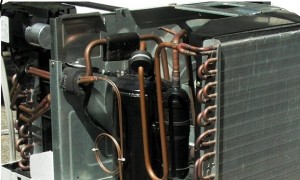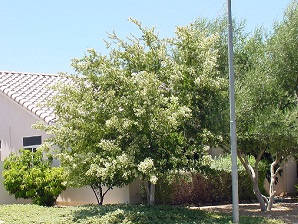Understanding Your Phoenix Air Conditioning System: AC Condenser Coils the Function and Purpose
 The quality, design and effectiveness of your Phoenix AC Condenser coil play a critical role in your battle against the extremes of Arizona temperature shifts. Efficient heating and cooling of your home involves much more than merely selecting a heat pump, an AC or a split system. To create a complete and efficient Air Conditioning system, your Phoenix AC installer must select and match your condenser to the appropriate sub-components.
The quality, design and effectiveness of your Phoenix AC Condenser coil play a critical role in your battle against the extremes of Arizona temperature shifts. Efficient heating and cooling of your home involves much more than merely selecting a heat pump, an AC or a split system. To create a complete and efficient Air Conditioning system, your Phoenix AC installer must select and match your condenser to the appropriate sub-components.
But what makes Air Conditioning Condenser Coils so critical to the function of the system? Consider the following three principles of AC mechanics and operation:
- The system compressor pushes pressurized gas through the AC Condenser Coils
- The condenser converts the gas to liquid
- The process is based upon the principle of heat transference wherein heat always tends to shift toward the cooler of two or more materials or substances.
Your AC condenser coils are designed to transfer heat into the air that passes over the coils. As the transfer process takes place, the gas in the coils condenses. However, the molecular structure of AC Refrigerants varies by type. Condensers used with R-12, R-134 and R410A systems are not interchangeable. Upgrading your Phoenix AC unit to a different refrigerant system is complex and expensive.
For more details on problems associated with older refrigerants, check the May 1st American Cooling and Heating article on the Montreal Protocol.
What Happens Inside the Unit
As your home AC compressor increases the pressure against the refrigerant, a strange process occurs: Heat within the system begins to accumulate into a single region of the unit. The temperature of the refrigerant begins to exceed the ambient temperature of the air cycling across the condenser coils. Clogged fins hinder the function of the condenser. Your home or business AC begins to perform with less efficiency and may even freeze the coils. If your system seems sluggish or sometimes freezes up, contact the AC&H Phoenix AC Repair center. Our full-service heating and cooling maintenance and tune-up program leaves no condenser fin un-check.
High Condenser Pressure Opposed to Low Condenser Pressure
Some Gilbert AC Service techs may add too much oil to your air conditioning system. This results in flooding wherein your condenser unit develops high head. This hinders the evaporator process of your Mesa Air Conditioning system. Cooling becomes less and less efficient.
Here are some the indications of AC troubles and the associated causes:
- Too-High Condenser Pressure – Typically evidenced by excessive head pressure on the high side of the gauge. Caused by hindered or reduced airflow over the condenser coils or restricted refrigerant flow in the high side of the system.
- Too-Low Condenser Pressure – A reversed situation wherein the pressure on the low side gauge exceed normal expectations. Typically involves reduced heat exchange in the AC Condenser, which permits excessive heat to remain in the system’s low side. Can be caused by a filed compressor piston or reed valve.
Copper Versus Aluminum Condenser Coils
This is an ongoing argument. AC systems with aluminum condenser coils typically cost less than systems with copper condenser coils. However, some techs argue that copper condenser coils are stronger and more durable than aluminum condenser coils. Issues concerning corrosion, weight and system expense are also components of the arguments. The May 9 AC&H article compares aluminum condensing coils against copper condensing coils. Perhaps it will help you better understand the reasoning behind these component battles.
American Cooling and Heating provides Phoenix AC Installation and Repair throughout the greater Metro Valley area, including Mesa, Gilbert, Scottsdale and other communities. If you have questions or need help, call us now. Our 24-hour response team is ready and able to provide honest and accurate guidance on all matters pertaining to home or business AC installation or services.



